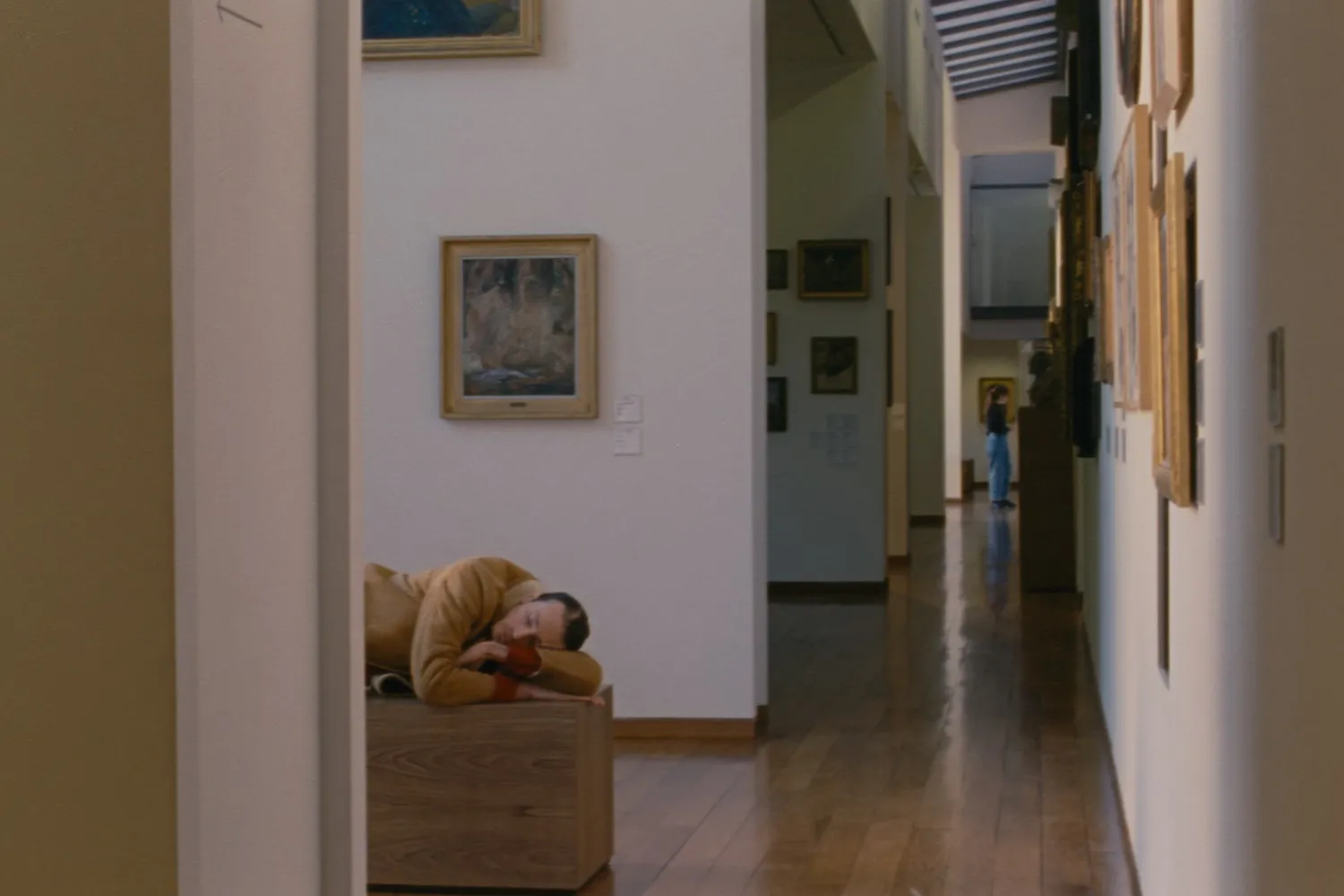Léonor Serraille has established herself among respected voices in French independent cinema, with earlier films that explored the spirit and complexities of everyday life. Her previous works brought sensitivity and honesty to the screen, creating expectations for “Ari.” Her reputation in the arthouse scene suggests a director skilled at portraying emotional depth and observational detail.
Set in Lille’s working-class neighborhoods, “Ari” introduces a young man navigating the challenges of his new career as a primary school teacher. The character of Ari appears thoughtful and vulnerable—struggling to find his place within a society that often feels indifferent. His experiences connect with individuals balancing personal ideals against practical adult realities.
The film uses a fluid narrative approach, with scenes unfolding in a relaxed, organic manner. Conversations feel authentic, and the camera captures intimate moments that reveal the character’s inner world. This technique echoes French New Wave sensibilities while speaking to viewers seeking genuine storytelling.
Plot Overview & Narrative Structure
Léonor Serraille presents a film structured around loosely connected episodes that gradually reveal the depths of its central character, Ari. The film abandons traditional plot mechanics, prioritizing moments that accumulate meaning through everyday interactions.
Ari’s encounters throughout his days offer a window into his inner world, surfacing issues from his fractured history and current pressures. Each scene serves as a small snapshot, capturing emotions that hint at the intricate makeup of his character.
A striking moment occurs during a classroom scene, where Ari loses control amid the chaos of young students. The teacher-in-training becomes overwhelmed, and this disruption illuminates his challenges with responsibility and self-expectation. Scattered flashbacks punctuate the narrative, presenting glimpses into formative experiences that continue to shadow him. These interludes create a portrait of a person shaped by moments of tenderness and struggle.
The film’s approach to timelines and storytelling emerges as a deliberate artistic choice. Moving beyond linear chronology, the narrative shifts between past and present, positioning character moments at the core rather than a sequential progression of events.
Sporadic returns to earlier memories offer insight into Ari’s inner landscape, clarifying how his current actions stem from unresolved experiences. This method invites viewers to assemble the character’s emotional history like a carefully constructed puzzle.
Serraille crafts a screenplay that prioritizes emotional depth over conventional structure. The film’s rhythm emerges through a series of vignettes connected by mood and intuition, encouraging audiences to explore the spaces between moments in Ari’s life.
Character Analysis
Ari emerges as a character defined by emotional depth and self-reflection. His inner world reveals a continuous struggle with personal history, where moments of gentleness intersect with profound uncertainty.
Raw emotions permeate his experiences, presenting an authentic portrayal of someone navigating a world without clear direction. Subtle expressions and hesitations communicate the profound experiences that continuously shape his perspective and choices.
Supporting characters serve as reflective surfaces for Ari’s internal conflicts. His relationship with his widowed father proves particularly revealing. Their connection pulses with tough affection; the father’s direct communication, tinged with subtle disapproval, illuminates generational tensions that complicate personal growth.
Friends and an ex-partner each expose different facets of Ari’s personality. A friend’s calm demeanor stands in stark contrast to Ard’s turbulent inner landscape, while his ex-girlfriend’s presence awakens unresolved emotions and persistent memories. These interactions expose layers of vulnerability and internal conflict that enrich his character.
The storytelling explores personal growth through nuanced human connections. Each conversation and shared moment reveals another aspect of Ari’s intricate identity. Companions’ responses to his moods and selections highlight his sense of separation while inviting viewers to recognize elements of their own experiences in his hesitation and hope.
The interplay between characters who manage their struggles with quiet restraint and Ari’s openly vulnerable state creates a textured exploration of a person slowly constructing his understanding of self.
Themes & Symbolism
Ari emerges as a young man adrift, struggling with adult responsibilities. The film explores his uncertainty through moments of aimless movement and candid interactions that reveal inner conflicts.
His experiences reflect the challenges many encounter in their twenties—a period suspended between youthful aspirations and life’s practical demands. The narrative invites viewers to contemplate the complexities of personal transformation.
The film’s emotional approach feels raw and unfiltered. Moments of breakdown expose the character’s sensitive core. Ari’s behavior carries a visible openness reminiscent of heartfelt scenes from French New Wave cinema, where personal suffering appears unvarnished. These fragile instances highlight his internal struggles, drawing attention to quiet emotional landscapes often left unexamined.
Surrealist poetry and visual art references weave through the film, functioning as metaphors for Ari’s inner world. These artistic elements add nuanced layers to his character, presenting symbols that suggest deeper internal conversations. For viewers passionate about cinema and artistic expression, these moments resonate with sincerity and depth.
Set within a working-class environment, the film examines contemporary social conditions. Everyday encounters paint a picture of a community wrestling with change and uncertainty. The narrative captures the experiences of a generation seeking direction amid societal shifts, exploring the intricate relationship between personal experience and broader cultural transformations.
Cinematic Style & Techniques
Serraille crafts a visual approach that draws viewers into intimate moments. Close-up shots reveal the nuances of Ari’s expressions, offering a glimpse into his most private thoughts. Handheld camera work creates a sense of urgency, immersing viewers in the character’s daily experiences.
Cinematographer Sébastien Buchmann uses natural light and unembellished framing of everyday settings, generating an immediacy that makes each scene feel deeply personal and authentic.
Conversations flow with spontaneous energy. Dialogue mixes structured lines with unexpected turns that feel genuine and unscripted. The approach evokes the unpredictable rhythm of a jazz performance, where ideas emerge without careful planning. This balance between intentional dialogue and natural speech creates a relaxed atmosphere, allowing viewers to connect with characters as if sharing an intimate conversation.
Sound design reflects Ari’s internal landscape. Ambient noises intertwine with a sparse musical score, creating a soundscape that echoes the character’s emotional shifts. Editing feels precise, with transitions mirroring the fractured nature of his thoughts. Carefully placed cuts and sound cues allow quiet moments to resonate alongside more dynamic scenes. These elements weave together, supporting the film’s reflective and personal storytelling.
Emotional Tone & Impact
The film weaves together playful moments and deep emotional landscapes. Instances of humor punctuate tense scenes, revealing the protagonist’s delicate inner world.
A brief interaction during an ordinary moment uncovers a subtle comedic spirit that exposes his vulnerability. Such moments remind viewers that levity can emerge even during personal struggles, softening emotional weight.
The storytelling embraces an intimate approach that captures life’s quiet nuances. The camera explores subtle expressions and small movements that communicate deeper emotions, creating an environment both personal and recognizable. This meticulous observation invites viewers to experience the character’s private challenges, generating an immersive and authentic experience.
Serraille’s work examines the uncertainties of contemporary existence. Her depiction of existential challenges speaks to anyone wrestling with the tension between personal dreams and practical realities. The raw portrayal of life’s unpredictable nature reflects the complex experiences many encounter, creating a story that connects deeply with human experiences.
Conclusion & Reflection on the Film’s Message
Ari’s story emerges as a gentle exploration of self-discovery. Throughout the film, we observe shifts in his demeanor and perspective. Initially, he appears uncertain, burdened by past mistakes. Gradually, through personal encounters and internal reflections, his character develops a quiet determination that suggests growing self-acceptance.
Meaningful interactions—such as conversations with his father and moments of stillness—reveal critical points in his personal growth, illuminating the challenges of transitioning from youth to a more stable life stage.
The narrative explores contemporary experiences of feeling lost amid societal pressures. Its story echoes struggles faced by individuals seeking to maintain personal identity within a demanding world. By presenting everyday challenges with depth and compassion, the film speaks to those wrestling with personal uncertainty while holding onto hope. Self-discovery emerges as a continual journey requiring emotional courage and openness.
Serraille’s artistic approach amplifies the emotional landscape of the story. Deliberate framing and thoughtful editing create a portrait that feels intimate and genuine. Her work stands as a compelling exploration of human vulnerability, offering viewers a deeply personal glimpse into life’s subtle emotional transformations.
The Review
Ari
Ari is a reflective, thoughtful film that captures the uncertainties of modern life with subtle artistry. Serraille’s inventive narrative and understated technical choices craft an experience that invites us to appreciate vulnerability as a quiet strength. The film’s measured pace may not suit every taste, yet its honest portrayal of personal growth speaks to those drawn to introspective cinema.
PROS
- Honest portrayal of vulnerability
- Inventive narrative structure
- Intimate and natural cinematography
- Authentic, heartfelt performances
- Thoughtful character exploration
CONS
- Meandering pace may not appeal to all


















































